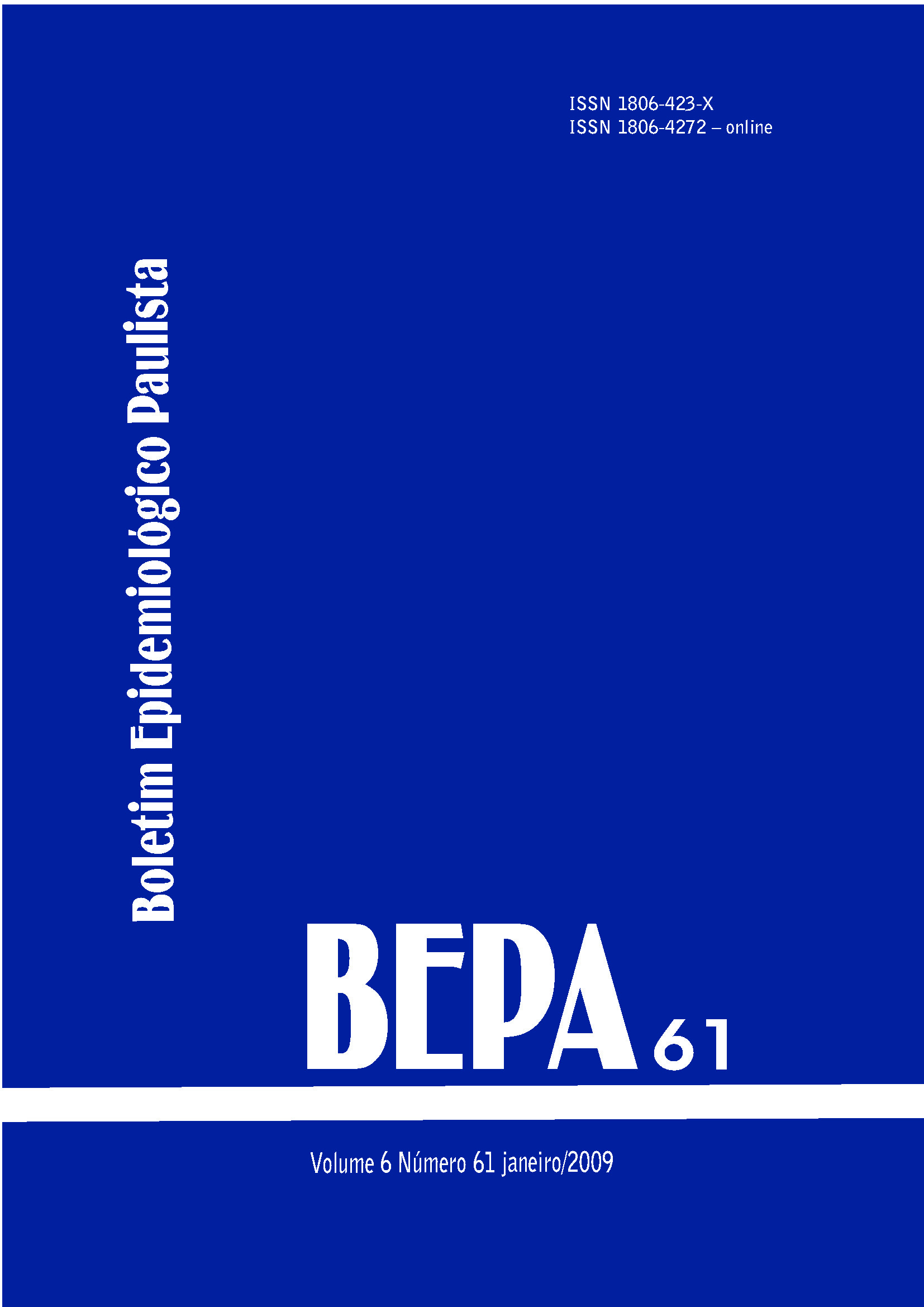Abstract
This literature review is used to reevaluate skin preparation procedures before immunization by health professionals, employing data bases such as Medline, MMWR, masters degree thesis and official sources like WHO, PAHO, the Ministry of Health of Brazil and the State Secretary of Health of São Paulo, among others. Documents and articles presented, in their contents, some of the following key words: skin prepare previous to immunization; skin assepsy previous to injections; skin assepsy for administration of parenteral vaccines; better practices in the control of infections in intradermical, subcutaneous and intramuscular injections. We have seen that little attention is given to teaching on skin preparation preceding injection administration. Despite the current utilization of alcohol 70% by the professionals, as well as by teachers and students on health issues we have not found evidences of any benefits from this procedure. Considering some of the previous papers published on skin preparation with alcohol 70%, we can see that: alcohol will have sterilizing properties when employed for 30 seconds and when allowed to dry for other additional 30 seconds. Therefore, the way it has been employed in the daily practice of immunization in basic health units, seems to be a dispensable procedure if the patient is clean and the professionals involved maintain adequate and indispensable hand-washing.
References
Ministério da Saúde. Fundação Nacional de Saúde. Centro Nacional de Epidemiologia. Programa Nacional de Imunizações. Procedimentos básicos segundo as vias de administração dos imunobiológicos/Aspectos Técnicos e Administrativos da Atividade de vacinação. In: Manual de Procedimentos para Vacinação 2001; Brasília; p. 85-94.
Nicoll LH, Hesby A. Intramuscular injection: an integrative research review and guideline for evidence-based practice. Applied Nursing Research 2002; vol. 16, 2(augst), p. 149-62.
World Health Organization - WHO. Safe Injection Global Network (SIGN). Phnom Penh, Cambodia; 2002. p. 24-5. WHO/BCT/02.13
Boletim Informativo PAI – Programa Ampliado de Inmunización em Las Américas. Preparación ordinária de la piel antes de uma inyección: um procedimiento innecesario; 1987, p 2.
Dann TC. Routine skin preparation before injection – An unnecessary procedure. Lancet.1969;p 96-8.
Dann TC. Routine skin preparation before injection: an unnecessary procedure. Practioner. 1966;196:546-50.
De Paula HB, Vicentini ME, Soares RSS. Organização do Centro de Materiais e Noções de Esterilização, em Cadernos de Saúde – Secretaria de Estado da Saúde de São Paulo; 1993, p 35-6.
Committee on Infectious Diseases, 1999-2000, Committee on Practice Ambulatory Medice, 1999-2000, Infection Control in phisicians offices. American Academy of Pediatrics. Pediatrics. 2000;105(6).
Vaccinia (smallpox) Vaccine Recomendations of the Advisory Committee on Immunization
Practices (ACIP) 2001. MMWR 50 (RR10).
Workman BRGN. Safe injection techniques, Art & Science: continuing professional Development: Nursing Procedure 1999;13(39), p 47-53.
Koivisto AV, Felig P. Is skin preparation necessary before insulin injection? Lancet. 1978;p 1072-3.
Takakura MS. Influência da assepsia da pele nas injeções intramusculares [Tese de Mestrado]. Rio de Janeiro: Escola de Enfermagem Anna Nery; 1975, p 54.
Del Mar CB, Glasziou PP, Spinks AB, Sanders SL. Is isopropyl alcohol swabbing before injection really necessary? Medical Journal of Australia. 2001;174:306.
Sutton CD, White SA, Edwards R, et al: A Prospective controlled trial of the efficacy of isopropyl alcohol wipes before venesection in surgical patients. The Royal College of Surgeons of England, Ann R Coll Surg. 1999, may, 81:183-186.
Royal College of Nursing, Royal College of General Practitioners, Royal College of Pediatrics and Child Health, Position Statement on Injection Technique, March 2002.
National Health and Medical Research Council. The Australian Immunisation Handbook (8th Edition) Commonwealth Department of Health and Aged Care. Australian Government Publishing Services Canberra. 2003; p. 44.
Hutin Y, Hauri A, Chiarello L et al: Best infection control practices for intradermal, subcutaneous, and intramuscular needle infections. Bulletin of the World Health Organization. 2003;81(7):491-500.

This work is licensed under a Creative Commons Attribution 4.0 International License.
Copyright (c) 2009 Marcia Monteiro Alves Fernandes, Clelia Maria Sarmento de Souza Aranda
